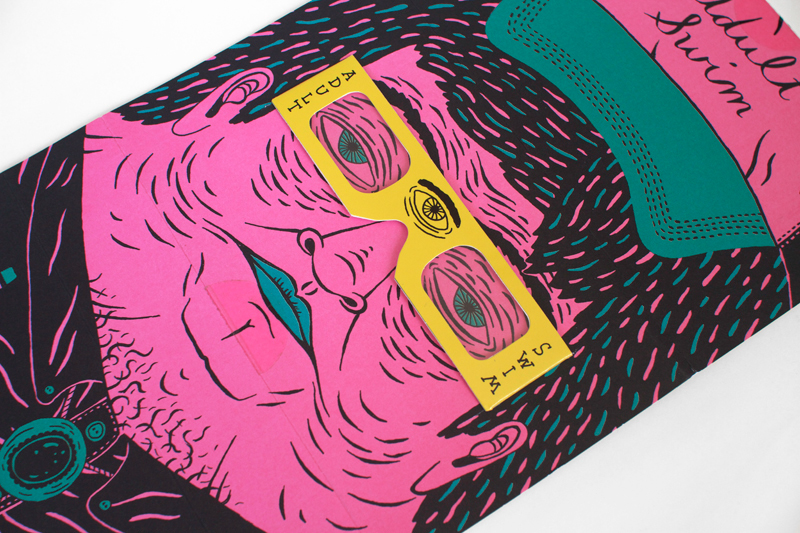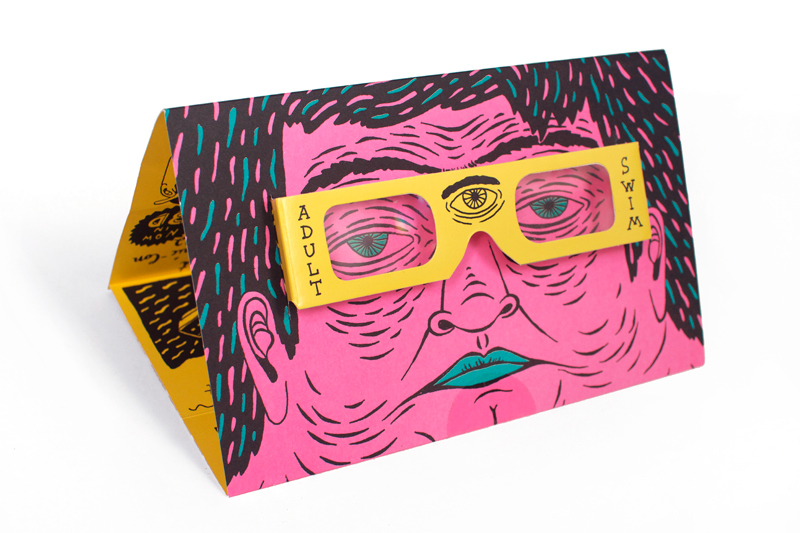This was the first leaflet fold that I tried out. It's a fairly simple concertina fold but I chopped bits out of the individual columns so that when it folded up it would look more interesting. Folded up it almost looks like a plait but when unravelled it reminds me of a cityscape. It would probably be relatively easy to develop commercially but a new cutter would need to be made.
Again I experimented with cutting into a fairly simple leaflet fold for a dramatic effect. I think with this one I cut too much off. It looks like someone has just gone at it with scissors with no purpose at all. Not what I was going for what so ever. The space that is left for designing on is very limited due to the cuts so I definitely will not pursue this fold any further.
I then moved away from rectangular leaflets and tried to create different shapes. I cut my paper into a square so I could create more angular shapes. I quite liked the idea of a triangular leaflet so I folded the square into a sort of gate fold. However the bottom flap just seems pointless and sticks out stopping the leaflet from folding flat. If this leaflet was to be made in a commercial printers they would probably have to create a custom cutter and fold plate so it wouldn't be very economically viable.
Another square fold that I created was this one which works quite well while remaining pretty simple. I like the way how you can fold it out flat. I could incorporate the triangle flaps into the design, making it more geometric. I don't feel like I could fit much information into this format though, because I would end up putting all the important information on the middle and not distributing it much else where.
Next I tried to experiment a bit with the scale of leaflets. I thought it would be more interesting to have a larger leaflet than a little one as you could fold it out and use it as a poster. I tried with an A2 concertina folding it 6 times but it ended up being too long and thin. I would much prefer something less thin at this scale. It would work if I wanted to separate all the design process into stages and have each on one fold.
Next I tried cutting the A2 paper in half lengthways and it seemed to work a lot better. I also did less folds for the concertina so there was more space for information within the folds. I like the way that it can stand up. Perhaps I could have one side that stands up with a title on and all the information on the other side. I think this is the most simple fold but it would be the best logistically and commercially if used.













